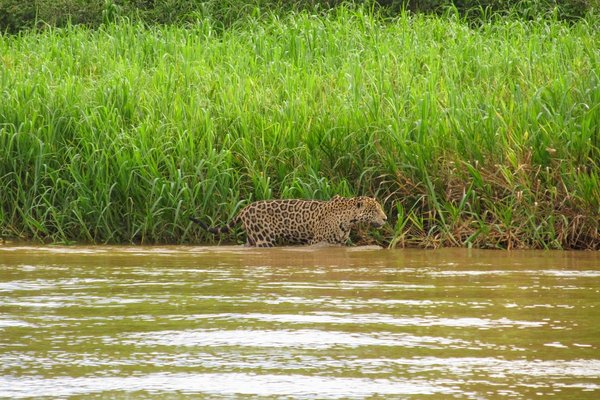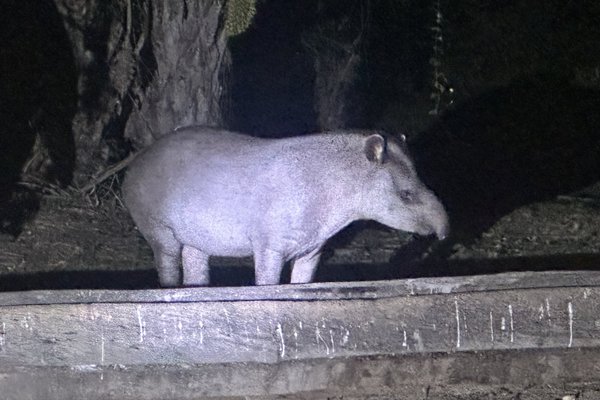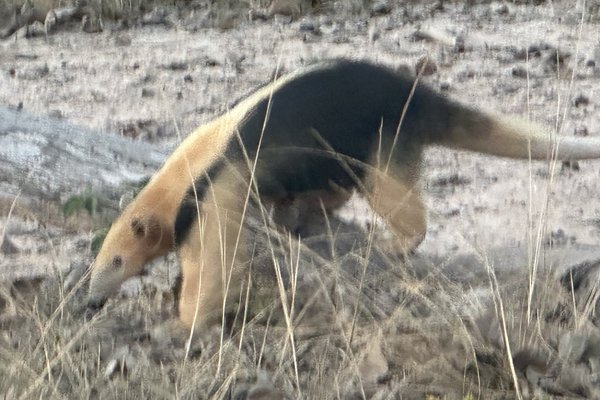Brazil
Pantanal
The Pantanal Conservation Area is a freshwater wetland ecosystem that seasonally floods.
In the rainy season, the rivers overspill and animals congregate at the remaining patches of dry land. The largest mammals migrate from the plain to the higher regions of the Amolar Mountain chain. Wildlife here includes a healthy jaguar population, plus marsh deer, giant anteater, capybara, and giant otter. Also, 650 species of birds have been recorded here.
Community Perspective: Be aware that the designated area covers only a small part of the wider region called Pantanal. It consists of Pantanal Matogrossense National Park, Dorochê Private Reserve, Acurizal Private Reserve, and Penha Private Reserve. The region’s flagship species such as tapir, giant otter, capybara and even jaguar can easily be seen in the tourist areas outside the core zone.
Site Info
Official Information
- Full Name
- Pantanal Conservation Area (ID: 999)
- Country
- Brazil
- Status
-
Inscribed 2000
Site history
History of Pantanal
- 2000: Inscribed
- Inscribed
- Type
- Natural
- Criteria
- vii
- ix
- x
Links
- UNESCO
- whc.unesco.org
- Official
-
- icmbio.gov.br — Pantanal
- Related
-
- en.wikipedia.org — Link
All Links
UNESCO.org
- whc.unesco.org — whc.unesco.org/
Official Website
- icmbio.gov.br — Pantanal
Related Resources
- en.wikipedia.org — Link
News Article
- Aug. 13, 2024 theguardian.com — Pantanal waterway project would destroy a ‘paradise on Earth’, scientists warn
- Sept. 19, 2020 bbc.com — Forest fires devastate Brazil's Pantanal tropical wetlands
- Nov. 8, 2019 time.com — Fires Are Ravaging Brazil's Pantanal
Community Information
- Community Category
- Natural landscape: Rivers, Wetlands and Lakes
Travel Information
Recent Connections
-
Misleading WHS Names
This site covers much less than the reg… -
No road access
Core zone only by boat -
Cretaceous
No Final do Cretáceo, esforços tensiona…
Connections of Pantanal
- Geography
-
-
Río de la Plata Basin
On the Paraguay River -
River deltas
It constitutes an enormous internal river delta (wiki) -
Antipodes points
Rice Terraces N16 56 2.004 E121 8 12.012 versus Pantanal Conservation Area S17 43 0.012 W57 22 59.988
-
- Trivia
-
-
In Video Games
Civilization VI
-
- Ecology
-
-
Otters
Giant Otter -
Tapirs
Brazilian tapir -
Strict Nature Reserve
Partly: Dorochê, Acuziral, Penha Private Natural Heritage Reserves. ""As to Private Reserves, Instituto Homem Pataneiro promotes visits to conservation units in the Amolar Mountains and one accommodation facility for visitors is located in PRNH Acurizal, in which the only permitted activities are research, environmental education and ecotourism." (IUCN Outlook) -
Sloths
brown-throated sloth -
Anteaters
giant anteater -
Bird Migrations
The Americas Flyway -
Jaguar habitat
-
Oxbow lakes
See link page 4 table 1 for examples actually inside the inscribed areas e.g "Acurizal Preserve - Oxbow lake (shallow)"See www.scielo.br
-
Swamps and Marshes
"Typical of swamps, near the rivers and on waterlogged patches of earth, are clumps of acurí palm trees, forming the palm-tree groves and palm woodlands for which the region is famous" (AB ev)
-
- Damaged
-
-
Affected by Climate Change
Climate change is also associated with increasing frequency and severity of fires, as was exemplified by some sites which have faced unprecedented fires in 2019-2020, such as Pantanal Conservation Area (Brazil). (IUCN Outlook 2020)See www.nature.com
-
- World Heritage Process
-
-
Perfect Inscriptions
2000
-
- WHS on Other Lists
-
-
WWF Global 200
Terrestrial, Flooded Grasslands and Savannas: (101) Pantanal Flooded Savannas -
World Biosphere Reserves
Part of larger Pantanal (2000) -
World Heritage Forest Programme
-
Ramsar Wetlands
Pantanal Matogrossense
-
- Timeline
-
-
Cretaceous
No Final do Cretáceo, esforços tensionais relacionados ao soerguimento em blocos da plataforma brasileira relacionado à orogênese Andina, promoveu um processo de desestabilização tectônica, acontecendo os dobramentos e falhamentos.See seer.ufms.br
-
- Visiting conditions
-
-
No road access
Core zone only by boat
-
- WHS Names
-
-
Misleading WHS Names
This site covers much less than the region that is known as the Pantanal in Brazil, Bolivia and Paraguay (only 1.3% of Brazil's Pantanal!). Four adjacent nature reserves/parks that are seen as representative of the whole have been chosen. Although 'Conservation Zone' in the full name is an indicator of limitations, a more precise name like 'Pantanal Matogrossense National Park and adjoining reserves' would be welcome.
-
News
- theguardian.com 08/13/2024
- Pantanal waterway project would de…
- bbc.com 09/19/2020
- Forest fires devastate Brazil's Pa…
- time.com 11/08/2019
- Fires Are Ravaging Brazil's Pantan…
Recent Visitors
Visitors of Pantanal
- Alberto Rodriguez Gutierrez
- Ali Zingstra
- Ammon Watkins
- Andrew0181
- Angela Vandyck
- Atila Ege
- Chinmaya
- Daniela Hohmann
- dave wood
- David Aaronson
- Els Slots
- Erfe91
- Erik Jelinek
- Eva Kisgyorgy
- Felicité
- Gernot
- IreneKD
- Jens
- João Aender
- Kjlauer
- Kurt Lauer
- Lameduck99
- Liamps91
- Loic Pedras
- Ludvan
- Luis Filipe Gaspar
- Michael Ayers
- Monica Tasciotti
- Niall Sclater
- Nihal Ege
- Olli-Pekka Turunen
- Patrik
- Pieter Dijkshoorn
- Reza
- Solivagant
- stephanvermeulen
- Thomas Buechler
- Thomas van der Walt
- Tim Allen
- Vanessa Buechler
- Waxwing
- Xiquinho Silva
- Zoë Sheng
Community Reviews
Show full reviews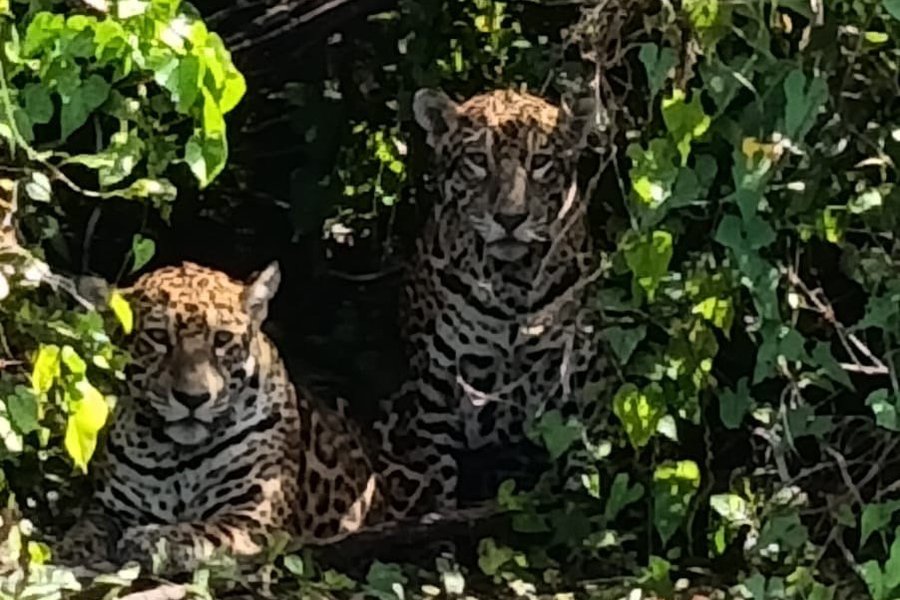
Pantanal is very a very popular tourist destination. There are also lots of suppliers to get around so it should be super easy to arrange a tour whenever you like. It does, however, get a bit pricey if you want to go by yourself. I originally planned this long ago and then it got canceled so I still had credit left over. I would probably not splurge on the high costs again if I had the choice. It does get cheaper when you are a in a bigger group so look out for that!
I actually went to the area twice in succession. I say "area" because 'Pantanal' is the entire wetland region. 'Pantanal' from UNESCO point of view (which is what you probably want seeing that you are reading it on this website) is the territory at Pantanal Matogrossense National Park which is miles away from the two nearby cities. You do technically enter going from the north but it's not really "entering". I once "entered" Los Katíos National Park in Columbia the same way by simply driving through on a boat. This is even less "entering" as you mainly drive on a lake area in the southwest corner of the park and that is after hours and hours of river cruising. But let's get through the two locations first.
The obvious one is in the north. You fly to Cuiabá and get picked up from your guides. It's the obvious way and in a few hours you will …
Keep reading 3 comments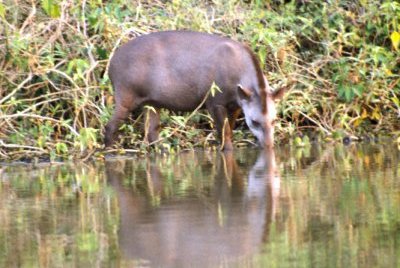
The Pantonal is an enormous area of flat lands in the basin of the river Paraguay in Western Brazil. Within it areas have been designated as a National Park or Strict Reserves. From Oct to Mar it is flooded and inaccessible to ordinary tourists. At other times it provides a good opportunity of seeing a number of the typically S American animals/birds in what are probably easier viewing conditions than Amazonian forest. It is also quite a relaxing place to visit with a number of Fazendas or ranches offering accommodation for a chill-out stay accompanied by non-vigorous walks or horse rides. You can easily arrange stays at these and transport in/out using local agents in nearby cities.
Since it covers such a large area and transport around/across the region is limited you really have to decide which part to aim for. If you are crossing to Brazil from Peru/Bolivia then you will probably settle for the southern section. If however you are “coming in” from the east and continuing elsewhere in Brazil then you have the choice of 2 main entry points – the cities of Campo Grande or Cuiaba. We chose Cuiaba, and I suspect that this is the more popular. Whether it is the better I cannot say. I can say however that we were satisfied with what we saw in 3 days and in the ease of arranging something quickly on arrival and in getting out (Ciuaba has very good transport connections, particularly by air). Cuiaba …
Keep reading 0 comments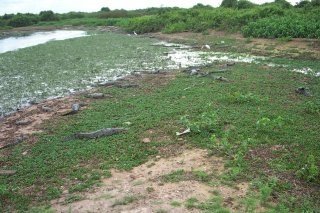
I visited the Pantanal on a 4-day tour from Cuiabá. Not to the protected zone, but to another nice part where there are lots of animals. The tour included all the local fun, like walking, horse-riding, bird spotting and piranha fishing.
Although at the end of October, it was still very dry in this area. Fortunately, because of that, there were not many mosquitos. The wildlife was still abundant though. We saw a tapir, otters, capybara's and alligators.
I think a bird spotter will find real joy in the Pantanal. In almost every tree you can see a wonderful example of the local birds here. To the more common visitor (like I am), the Tuiuiu (a 1.40 m. high creature) is amazing to watch.
Keep reading 0 comments
